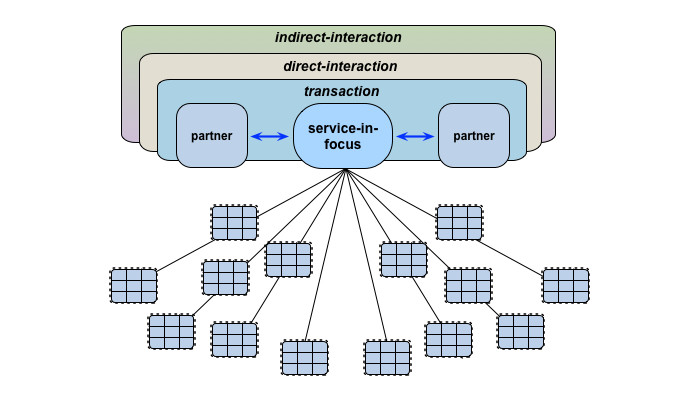
Towards a whole-enterprise architecture standard - 1: Introduction
For a viable enterprise architecture [EA], now and into the future, we need frameworks, methods and tools that can support the EA discipline’s needs.
What we need now are tools and techniques that can extend all the way out to a literal 'the architecture of the enterprise' - whatever that enterprise might be. The catch is that most of the existing frameworks don't support those needs very well:
- most enterprise-architecture frameworks are either context-specific - such as DoDAF (defence), TEAF (Treasury), FEAF (government) - or industry-specific - such as eTOM (telecoms) or SCOR (logistics)
- most if not all of the mainstream 'EA' frameworks are centred primarily or exclusively around IT
- many of the frameworks - such as DoDAF - consist of little more than a list of required artefacts, without any details as to how (or even why) those artefacts should be developed
- most business-architecture frameworks tend to be either context-specific, or for commercial usages only - such as Business Model Canvas
- TOGAF is almost the only framework with an explicit architecture-development method, but unfortunately it's structured around an 'inside-outward' view of the enterprise (organisation-centric rather than enterprise-oriented), and inherently drives us towards IT-centrism
- almost none of these frameworks give any guidance on how to adapt the content to other contexts - TOGAF is one of the few that does, if in very limited form
- some if not most of these frameworks are so outdated, or so hardwired against change, or have so many other structural faults, that we can only safely use them if we already know enough enterprise-architecture to not need the framework anyway - which kinda defeats the object of the exercise...
Which in practice means that if we need our architectures to link between industries, or work with any mix of commercial, government and not-for-profit, or develop architectures that centre on anything other than IT, we're largely on our own.
Which is not exactly helpful...
In short, if we want an enterprise-architecture framework that will actually serve our current and future needs, it looks very much like we need to start again from scratch:
- we need a new core that fully understands enterprise-architecture, not just beyond IT, but all the way out to the whole-enterprise, at any scope, any scale
- we need a new architecture-development method that can work with any architecture context, again at any scope and scale
- we need a new set of content-frameworks that can self-extend to cover any required architecture-context
- we need new toolsets to support new context-adaptive EA practices
- we need new EA training and education to support all of these new functions and requirements
That’s what we’ll explore in subsequent posts in this series.
---
[First published on the Tetradian weblog on 22 April 2016 as 'Towards a whole-enterprise architecture standard - 1: Introduction'.]
I believe the whole idea of "frame works that address everything (Technology/Business domains" and "the tools that can capture the dynamic behavior of the enterprise" has always lead to more complexity. We have the frameworks to understand the enterprise (Systems thinking, Game theory, Porter's work on strategy and competition etc) we have the process theories (Lean, Agile etc) we have the tools (white-boards, stickies, markers, cell-phones, we can draw squares/rectangles and we can connect them with arrows) - we need good architects - we need smart people - we need leaders.
Senior Advisor (PhLic) with passion for sustainability, digital product passport, and modern enterprise and information architecture.
8yAn intersting call for action, but what ensures that such an effort does not end up as Yet-Another-Traditional-EA-framework?
CIO
8yTom: You have made tremendous contributions to the expected "new EA" . I am eagerly expecting the subsequent posts and keenly keeping an eye on how you will address the shift from IT. Great job Tom.
Chief Data Officer (CDO) at Confidential
8yAgree we really need such a new framework
Executive Advisor @ stc | Driving Innovation, Strategic Mindset, Deep Industry Knowledge
8ygreat